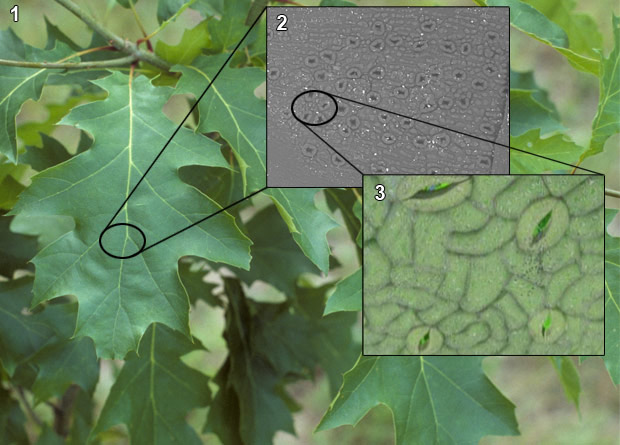Import/Export
The tree is like a tightrope walker – it is constantly trying to find a balance between carbon gained and water lost. Its leaves, which absorb carbon dioxide from the air during photosynthesis (Synthesis of organic substances made by plants from the light energy.), at the same time lose water via transpiration (Loss of water vapor at the leaf surface.). So as to micro-manage these gas exchanges, the leaves confine them to tiny cavities called Substomatal cavity (Cavity of the stoma.). Donut-shaped guard cells (Cell forming the edge of a stoma.) control access to these chambers, opening and closing on command to reveal an orifice called a stoma (A minute epidermal pore in a leaf or stem through which gases and water vapor can pass. ).
The stomata open up in daytime, as carbon capture for photosynthesis occurs in the presence of light. In some trees, however, where the leaves would lose too much water through transpiration, the stomata close back up under the noonday sun.

© 1. Jardin botanique de Montréal (Normand Fleury) / 2. Yann Vergriete /
3. Dr. Lawrence Jensen
Trees can have anywhere from 1,400 to over 100,000 stomata per cm2 of leaf (one square centimetre is about the size of a fingernail). Even in such huge numbers, the stomata are so tiny that they represent only 1% to 2% of the leaf's surface area – but, through them, the tree gets rid of 90% of its water!




